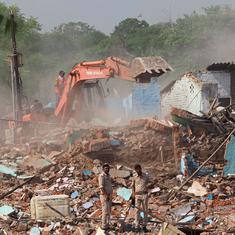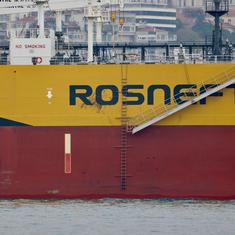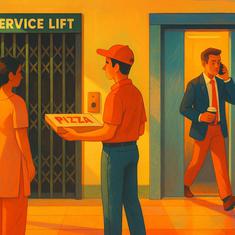Amid flight cancellations, DGCA says checks on Air India’s 787 fleet revealed no safety concerns
The airline cancelled 16 flights on Tuesday, 13 of which were scheduled to use Boeing 787 aircraft.

The recent checks conducted on Air India’s Boeing 787 aircraft fleet after the plane crash in Ahmedabad on June 12 did not reveal major safety concerns, the Directorate General of Civil Aviation said on Tuesday amid the cancellation of several flights.
“The aircraft and associated maintenance systems were found to be compliant with existing safety standards,” the civil aviation regulator said after a meeting with Air India and Air India Express officials.
On Tuesday, Air India cancelled 16 flights that were to use wide-body planes. Of these, 13 were scheduled to use Boeing 787 aircraft, the regulator said.
Since the June 12 crash, 83 flights operated on wide-body aircraft such as the 787 Dreamliner and Boeing 777 have been cancelled, The Hindu quoted the regulator as saying. Of these, 66 were scheduled to use 787s.
The delays and non-availability of aircraft for some flights on Tuesday were due to enhanced safety inspections mandated by the DGCA and airspace closures in West Asia, The Indian Express quoted unidentified officials as saying.
Two hundred and forty-two persons were aboard the Boeing 787-8 Dreamliner aircraft – enroute to London’s Gatwick airport from Ahmedabad – that crashed just 33 seconds after taking off on June 12. Only one passenger survived with “impact injuries”.
The aircraft’s crash into the hostel building of the BJ Medical College also killed at least 33 persons on the ground. The crash is being viewed as the world’s worst aviation disaster in a decade and the first fatal involving a 787 Dreamliner aircraft.
On Tuesday, the civil aviation regulator said that it had convened the meeting with Air India and its subsidiary Air India Express to review the operational robustness of the airlines and ensure continued compliance with safety and passenger service regulations.
The regulator said that it had raised concerns about recent maintenance-related issues reported by Air India. “The airline was advised to strengthen internal coordination across engineering, operations, ground handling units and ensure availability of adequate spares to mitigate passenger delays resulting from such issues and strictly adhere to regulations,” the DGCA said.
Dreamliner safety checks
The DGCA said that enhanced safety inspections it had ordered in light of the June 12 crash was applicable to the entire Boeing 787 fleet of 33 aircraft.
“Of these, 4 aircraft are currently undergoing major checks at various MRO [maintenance, repair and overhaul] facilities,” the press release said, adding that 24 aircraft had completed the required checks as of 3 pm on Tuesday.
Two more aircraft were to complete the checks on Tuesday and one on Wednesday, it said.
The regulator said: “The remaining 6 aircraft include 2 aircraft, which are presently AOG [aircraft on ground] at Delhi. The checks on these two will be carried out post-declaration of serviceability and prior to their return to service.”
The remaining four aircraft would undergo checks prior to their release from their maintenance hangars, the regulator added.
The DGCA said that it had recommended the implementation of a “more systematic and real-time defect reporting mechanism” to ensure that operational and safety-critical departments receive timely updates.
“This is expected to enhance overall decision-making and reduce downstream disruptions,” it said.
The impact of the recent airspace closures, particularly over Iranian airspace amid the conflict between Iran and Israel was also reviewed, the regulator said, adding that airlines had been asked to ensure timely communication with passengers and crew and adopt alternate routing strategies.
Murlidhar Mohol, the minister of state for civil aviation, said that a high-level panel constituted to investigate the crash is expected to submit its report within three months, The Hindu reported.
Separately, the Aircraft Accident Investigation Bureau was conducting a probe into the crash. The United States’ National Transportation Safety Board had also launched a parallel investigation.
Also read: Air India crash: What is the Boeing 787 Dreamliner’s safety record? An expert explains









